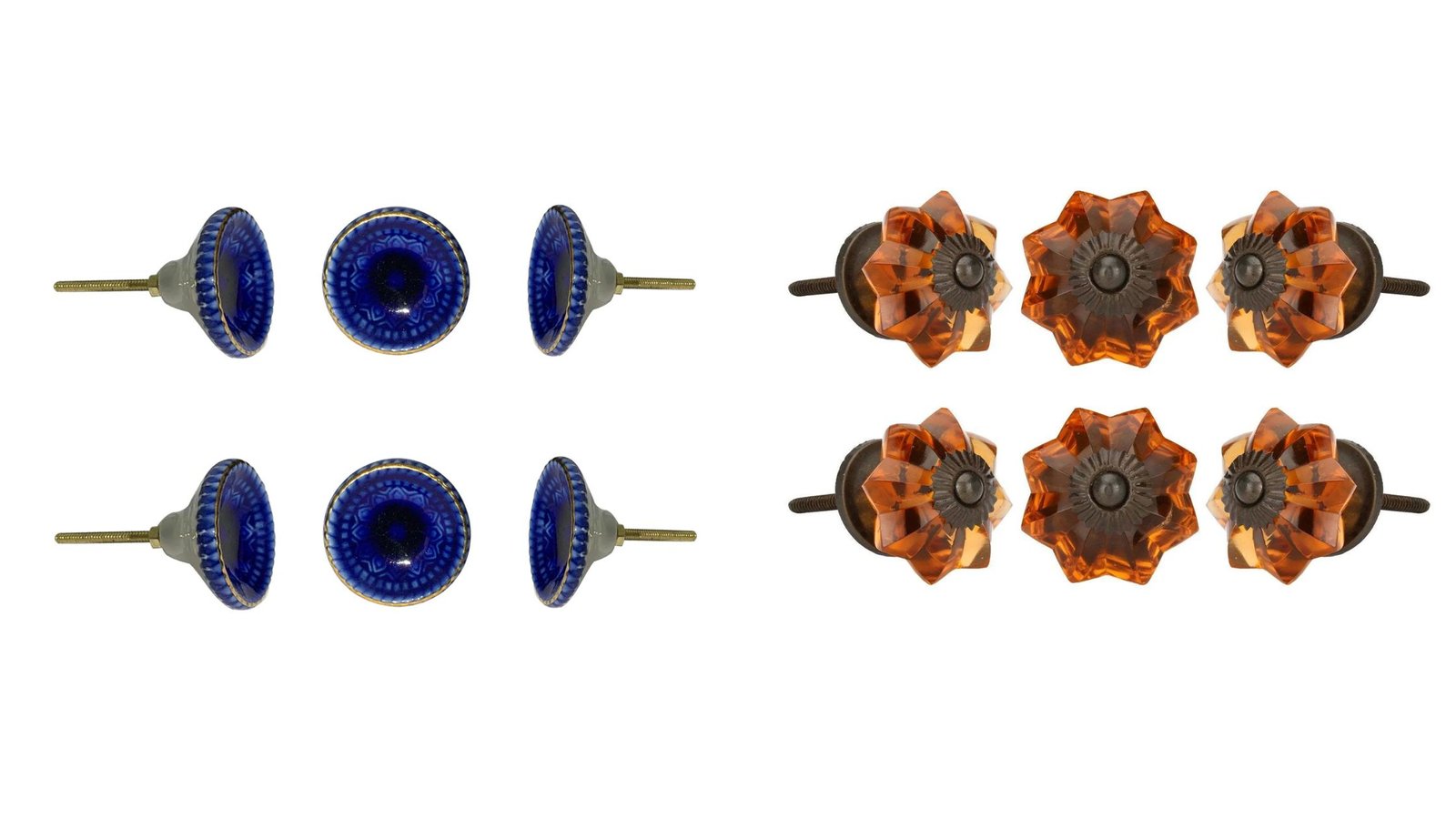When restoring or upgrading vintage furniture, the small details can make the biggest difference. One such detail is the choice of knobs, which can completely change the aesthetic of a piece. Ceramic and glass knobs are two timeless options that can transform a piece of furniture into a statement of character and style. But how do you decide between the handcrafted charm of ceramic knobs and the elegant allure of glass knobs? Let’s explore both to help you determine which adds more character to your vintage furniture.
1. The Aesthetic Appeal of Ceramic Knobs
Ceramic knobs have been a popular choice for centuries, adding a touch of handcrafted artistry to furniture. These knobs often feature vibrant colors, intricate designs, and patterns that bring a personal, nostalgic feel to any vintage piece. Whether your vintage furniture leans towards a rustic, cottage, or farmhouse style, ceramic knobs are a perfect match.
The tactile nature of ceramic knobs makes them feel warm and inviting. Each knob may carry unique imperfections, highlighting their handcrafted nature, which complements vintage furniture beautifully. For example, a distressed wooden dresser can be elevated with a set of ceramic knobs that feature hand-painted floral designs, adding color and personality to an already storied piece.
Ceramic knobs also offer versatility in terms of styles and colors. From bright, playful designs to simple, neutral tones, these knobs can easily blend into a wide range of décor schemes while still making a bold statement.
2. The Elegance of Glass Knobs
On the other hand, glass dresser knobs provide an entirely different aesthetic — one of sophistication and understated luxury. Glass knobs exude timeless elegance and were particularly popular during the Victorian and Art Deco eras, making them a perfect choice for vintage furniture from those periods.
Glass knobs bring a sparkling quality to furniture, especially when paired with rich wood tones or polished finishes. They reflect light in a way that adds dimension and glamour, giving furniture a high-end, polished look. A dark mahogany cabinet, for example, instantly becomes more refined and elegant with the addition of crystal-cut glass knobs.
For those who appreciate refined beauty and want to give their vintage furniture a more luxurious feel, glass knobs are the ideal choice. They are especially suited to furniture pieces that emphasize symmetry and classic elegance, such as Victorian dressers, sideboards, or dining room hutches.
3. Durability and Practical Considerations
While both ceramic and glass knobs have aesthetic benefits, practical considerations are equally important when choosing the right hardware for your vintage furniture. Durability plays a key role, especially for pieces that see frequent use, such as kitchen cabinets or living room furniture.
Ceramic knobs, while visually striking, can be prone to chipping or cracking if they endure frequent impact. They are better suited for furniture that is decorative or sees minimal day-to-day use. However, ceramic knobs are often glazed for added protection, which makes them durable enough for most situations if treated with care.
Glass knobs, particularly those made from quality glass, are surprisingly sturdy but still require some caution. They can chip or crack if subjected to rough handling. For this reason, glass knobs are ideal for furniture in areas where they are less likely to experience rough usage, such as bedroom dressers or display cabinets.
4. Matching Ceramic and Glass Knobs with Furniture Finishes
When choosing between ceramic and glass knobs, consider the finish of your vintage furniture. Ceramic knobs pair wonderfully with distressed wood, painted finishes, and antique white or pastel shades. For instance, an antique white armoire with colorful ceramic knobs can create a whimsical, country-style feel. Similarly, ceramic knobs with earthy tones complement wood furniture with a natural or rustic finish, making them an ideal match for farmhouse-style furniture.
Glass knobs, in contrast, work best with darker wood finishes or highly polished surfaces. They bring a sleek, luxurious touch to walnut, mahogany, or cherry wood, and pair beautifully with metallic accents. Glass knobs can also be paired with furniture that has a glossy or lacquered finish, enhancing the overall sophisticated look of the piece.
5. Personalization and Customization
Both ceramic and glass knobs offer opportunities for personalization. Ceramic knobs can be hand-painted in various designs, from intricate floral patterns to abstract shapes, allowing you to inject your personal taste into your furniture. You can choose to have unique, artisanal knobs crafted specifically to match the color scheme and style of your home, giving your vintage furniture a truly one-of-a-kind look.
Glass knobs also come in a variety of designs, including crystal-cut shapes, colored glass, or even vintage replicas of Art Deco or Victorian designs. Custom glass knobs can be sourced in a variety of colors and shapes to match your décor, making them a highly versatile option for a tailored look.
6. Which Adds More Character? (Pros & Cons)
When deciding which type of knob adds more character to your vintage furniture, it’s helpful to weigh the pros and cons of each.
Ceramic Knobs Pros:
- Adds a warm, handcrafted touch.
- Available in a variety of colors and designs.
- Pairs well with rustic or cottage-style furniture.
Ceramic Knobs Cons:
- May chip or crack with heavy use.
- Better suited for decorative pieces rather than high-traffic areas.
Glass Knobs Pros:
- Elegant and luxurious appearance.
- Reflects light, adding sparkle and dimension.
- Ideal for Victorian or Art Deco styles.
Glass Knobs Cons:
- Can be delicate and may require careful handling.
- Less suited for furniture that sees heavy usage.
7. Final Decision: How to Choose Based on Your Vintage Furniture Style
Ultimately, the choice between ceramic and glass knobs comes down to your furniture’s style and the look you want to achieve. If you’re aiming for a more casual, rustic, or artisanal feel, ceramic knobs will give your vintage furniture a personal touch that feels inviting and unique. However, if you want to elevate your furniture with a touch of glamour and elegance, glass knobs will add just the right amount of sparkle and sophistication.
8. Conclusion
Incorporating either ceramic or glass knobs into your vintage furniture is a surefire way to enhance its character. Both options offer distinct advantages and bring their unique charm to the table. By carefully considering your furniture’s style, finish, and usage, you can confidently choose the right knob that complements and elevates your vintage pieces, whether it’s the handcrafted beauty of ceramic or the elegant brilliance of glass.



